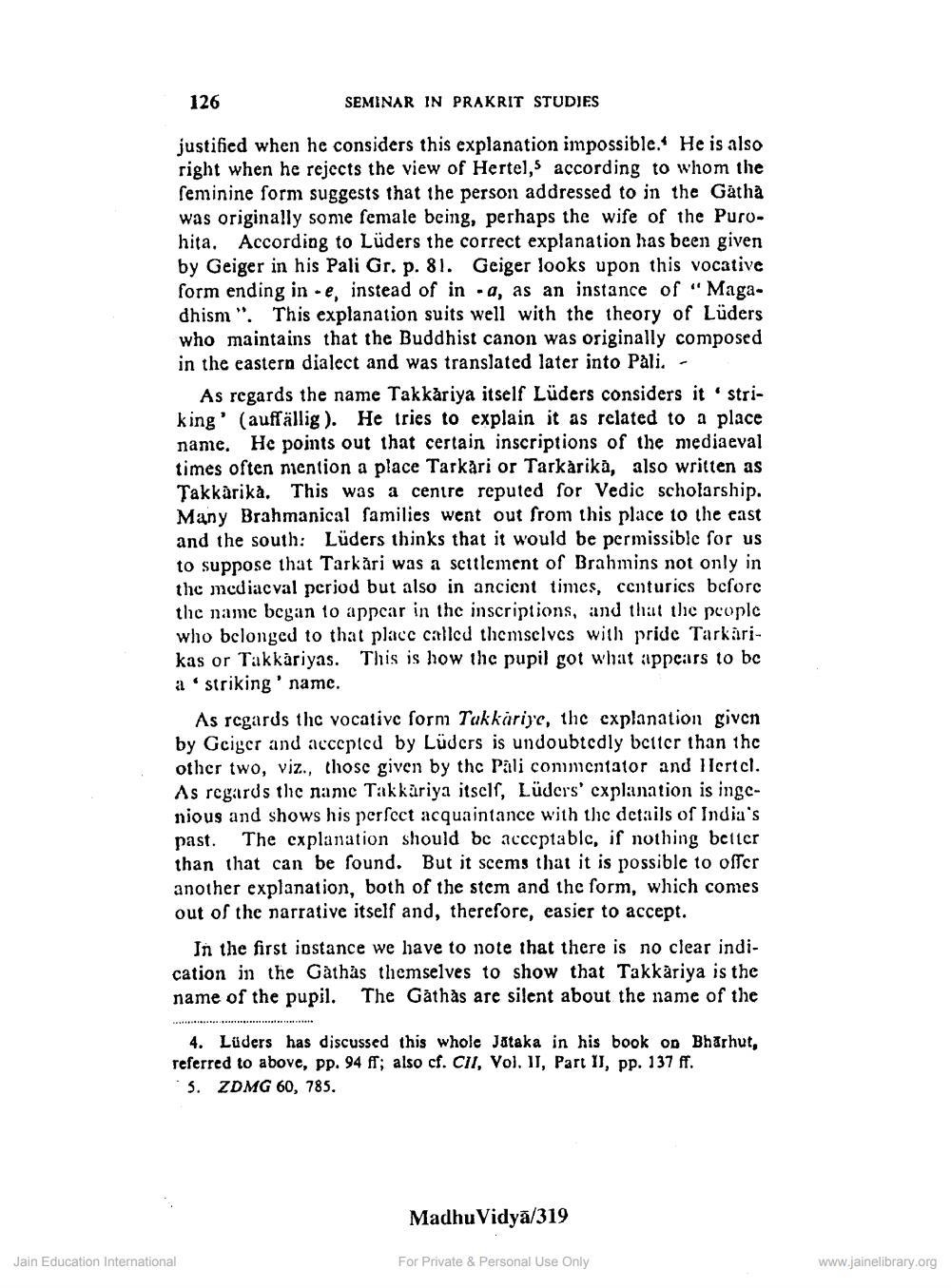________________
126
SEMINAR IN PRAKRIT STUDIES
justified when he considers this explanation impossible. He is also right when he rejects the view of Hertel,5 according to whom the feminine form suggests that the person addressed to in the Gathà was originally some female being, perhaps the wife of the Purohita. According to Lüders the correct explanation has been given by Geiger in his Pali Gr. p. 81. Geiger looks upon this vocative form ending in -e, instead of in -a, as an instance of “Magadhism". This explanation suits well with the theory of Lüders who maintains that the Buddhist canon was originally composed in the eastern dialect and was translated later into Pali. -
As regards the name Takkåriya itself Lüders considers it striking' (auffällig). He tries to explain it as related to a place name. He points out that certain inscriptions of the mediaeval times often niention a place Tarkari or Tarkariká, also written as Takkàrika. This was a centre reputed for Vedic scholarship. Many Brahmanical families went out from this place to the east and the south: Lüders thinks that it would be permissible for us to suppose that Tarkåri was a settlement of Brahmins not only in the mediacval period but also in ancient times, centuries before the name began to appear in the inscriptions, and that the people who belonged to that place called themselves with pride Tarkarikas or Takkariyas. This is how the pupil got what appears to be a striking' name.
As regards thc vocative form Takkariye, the explanation given by Geiger and accepted by Lüders is undoubtedly better than the other two, viz., those given by thc Pali commentator and Ilertcl. As regards the name Takkariya itself, Lüders' cxplanation is ingenious and shows his perfect acquaintance with the details of India's past. The explanation should be acceptable, if nothing better than that can be found. But it scems that it is possible to offer another explanation, both of the stem and the form, which comes out of the narrative itself and, therefore, casier to accept.
In the first instance we have to note that there is no clear indication in the Gathas themselves to show that Takkariya is the name of the pupil. The Gathas are silent about the name of the
4. Lüders has discussed this whole Jataka in his book op Bharhut, referred to above, pp. 94 ff; also cf. CII, Vol. II, Part II, pp. 137 ff.
3. ZDMG 60, 785.
Madhu Vidyā/319
Jain Education International
For Private & Personal Use Only
www.jainelibrary.org




